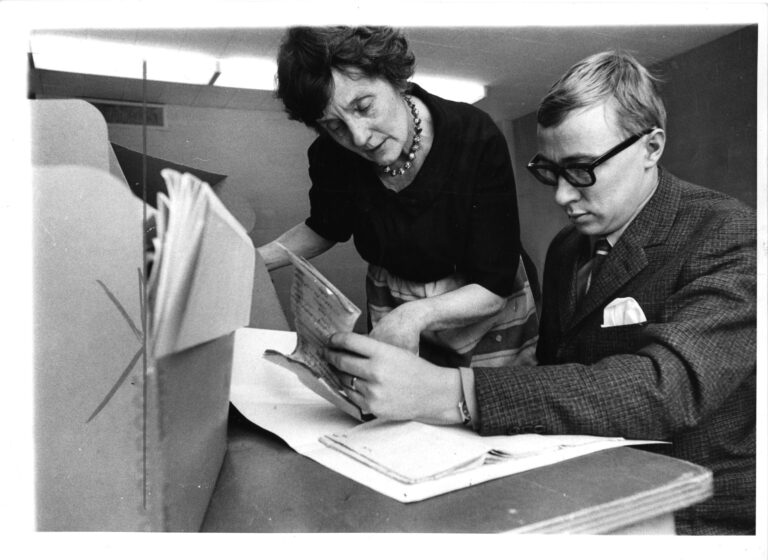
The F.M. Johnson Archives and Special Collections at ������’s (������) Brandel Library supports three major archival repositories: the Covenant Archives and Historical Library, the ������ Archives, and the Swedish-American Archives of Greater Chicago (SAAGC).
Selma Jacobson (pictured above), a Chicago Public Schools teacher, was the driving force behind the effort that would eventually become the SAAGC. The SAAGC documents the experiences of Swedish immigrants in Chicago, tying closely to North Park’s heritage; Swedish immigrants established the Evangelical Covenant Church and ������. The SAAGC is an international research destination with resources documenting various topics, including Swedish food traditions; St. Ansgarius Episcopal Church, the oldest Scandinavian church in Chicago; and accounts of women who maintained social ties to Sweden after immigrating.
These resources are available to individuals—including academic researchers, students, and reporters—interested in learning more about Chicago’s intercultural makeup.
The Swedish-American Historical Society owns the archival collections that comprise the SAAGC. Both grew from the 1948 Swedish Pioneer Centennial, a celebration honoring the Swedish immigrants who settled in the Midwest.
North Park has supported the SAAGC since its inception. In collaboration with the Brandel Library and the Center for Scandinavian Studies, ������ has provided the SAAGC with the necessary archival infrastructure within the Brandel Library, ensuring preservation and public access to its collections.
In addition to housing the SAAGC, North Park is a member of the Chicago Collections Consortium and the Black Metropolis Research Consortium, groups seeking to empower and connect researchers with archival resources focused on understanding Chicago.
This history, these records, and these relationships have allowed ������ to contribute to Chicago’s rich tapestry of cultural institutions, fully living its intercultural distinctive.


